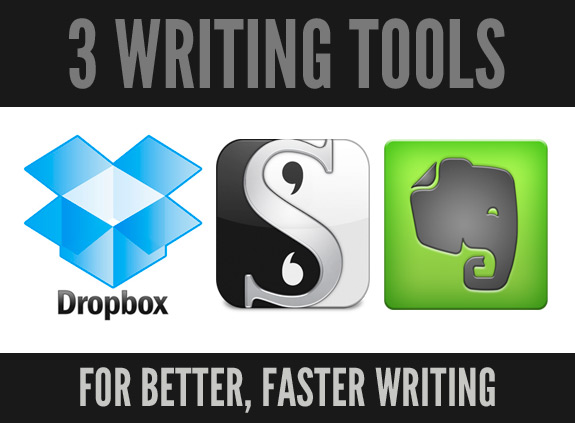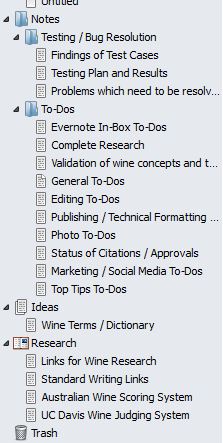First of all, I would not have believe it had you told me prior to using Scrivener that it would be possible to triple my productivity as a writer. But I am certain that my productivity has increased that much or more. In addition to Scrivener, I have been using several other tools such as Evernote and Dropbox which have helped also. But Scrivener on its own is the heart of my writing management workflow now and is the primary reason my productivity has increased so much.
I describe my previous writing process in a blog I wrote recently. To summarize, I was using Microsoft Word for writing and had a few different to-do lists of activities to finalize the efforts and get ready for publishing. But my current WIP is much more complex and it is was clear that using Word and a few to-do lists was going to be extremely onerous in terms of bringing this effort to readiness for publication, yet alone to do so with high quality. Read my previous blog to understand the research I did and why I choose Scrivener.
But where did the productivity from Scrivener emanate from? How is it possible to see a three- or four-fold improvement? The productivity gains came from the following areas:
- Scrivener is not just an editor and word processing system, but also a project management system and publishing system
- Scrivener has ‘binders’ which the manuscript comprises (divided into Parts, Chapters, and Sections as you see fit), but the binders can also be used for non-manuscript tasks (under a section called ‘Notes’ which means they are not to be included in final publication), for use such as research, to-do folders, links to editing and grammar tools, etc. This greatly integrated into one file all aspects of the writing process, including content, tasks, links, etc.
- I have multiple Notes binders to keep status of and links to research folders, URLs, etc. so within one window, I can work and swap between all the elements of the writing process
- Each binder has a separate window for notes, comments, thoughts, etc. and there is an overall one at the writing project level (you can toggle between the project and the individual binder [usually a Chapter] sections)
- I can annotate comments, endnotes, footnotes, etc. as I am writing to later build a Bibliography and respective citations which is integrated into my writing and not an onerous task to do later
- The same is true for my use of photos and ‘Fun Fact’ insets. These would be major undertakings later in the process, but now they are integrated into the writing process and a by-product of my writing
- Scrivener provides multiple split windows to keep two different parts of the manuscript on the screen for cross-referencing and being able to cross-check linked sections. This has saved me a tremendous amount of scrolling back and forth in Word when comparing related sections and ensuring I have placed the content in the appropriate section
- Each binder maintains meta-data used for status, binder type, etc. which helps you understand where you are and to manage the writing process
- I use Evernote and my iPad to take notes, regardless if I am highlighting research in a Kindle book or using post-it notes with a printed book to capture the citation when it is first identified. These notes then are synched (I do a manual cut and paste) from Evernote into a general binder into Scrivener and then into the individual chapters and section of the book to help me complete my writing or re-writing
- I use Dropbox and Evernote to provide PDF files and other research to study on my iPad and then create notes into Evernote to be loaded back into Scrivener
- Scrivener has sophisticated ‘Compile’ options to many different formats including ePub, Kindle, RTF, PDF, etc. which can then be tested immediately (using Kindle Previewer) for formatting issues and your final publication can be debugged early on in terms of technical formatting issues
The previous individual tasks and lengthy processes of writing, re-writing, photography, citation, editing, and publishing are integrated into a single workflow which saves a great deal of time. I have also integrated mind mapping with Scrivener which has worked great, but that is a topic for another blog. Scrivener supported by Evernote has been a ‘close to perfect’ set of tools for a significantly improved writing workflow. It matches perfectly the way I like to work, fits my sense of order and integrates writing with project management to ensure you get the job of writing completed expeditiously.
Without Scrivener, I would probably have to spend another eight to ten months to finish off my current effort for my book, Wine Sense. As it is now though, I have hopes to finish it by early 2014.
© 2013. Steve Shipley, author of Wine Sense, due out early 2014
Twitter: @shipleyaust
Still Stupid at Sixty (published under my writing pseudonym Blake Stevens)



Árni Viðar on September 21, 2013 at 12:01 pm said:
Sounds like an excellent tool. Definitely sounds like something I’d like to be using and would fit my style if I were writing something.